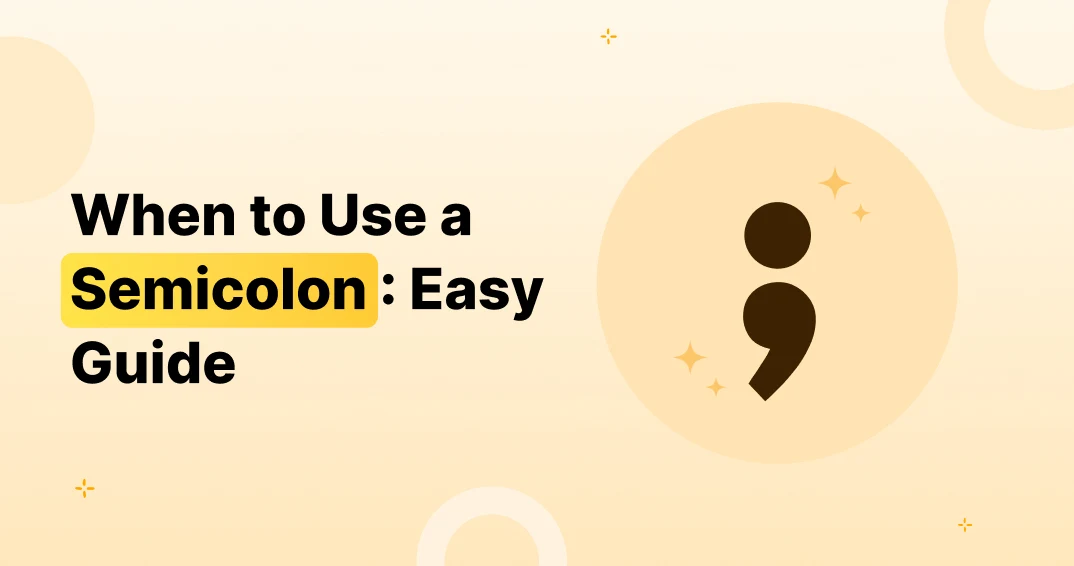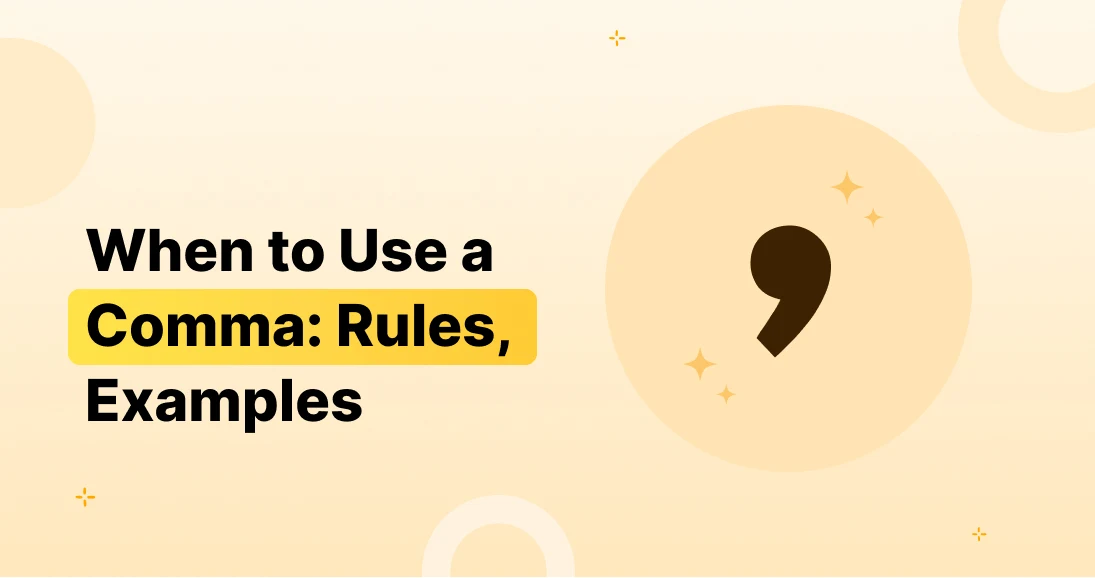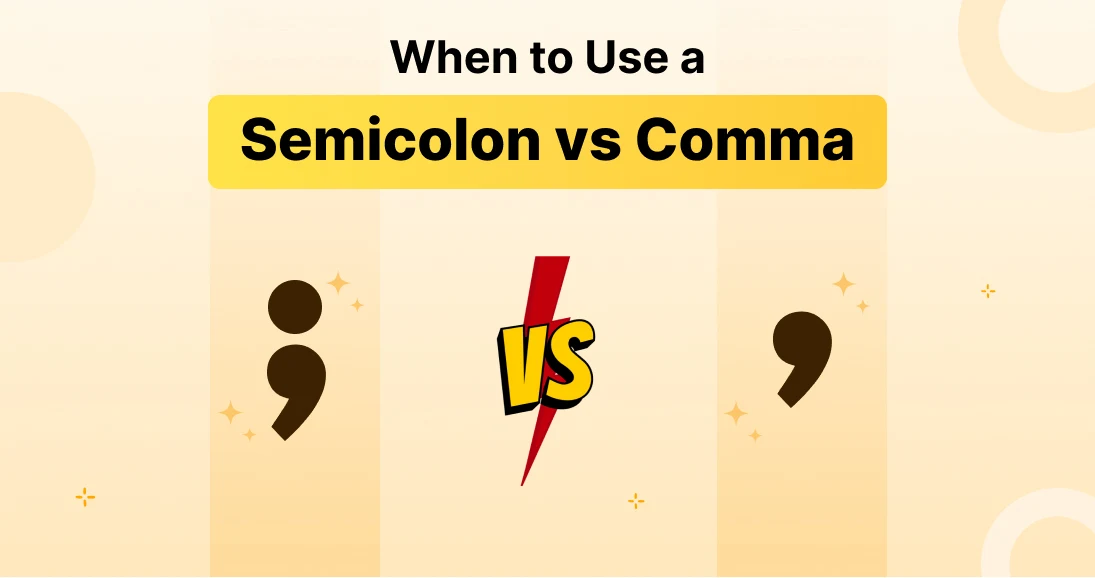Punctuation could make or smash your writing. One tiny mark can alternate the entire meaning of a sentence, and the semicolon is one of those powerful equipment regularly misunderstood. If you’ve ever asked yourself “while applying a semicolon” or “when do I use a semicolon?” — you’re no longer on my own.
This guide will walk you through everything you need to know about when to use a semicolon in a sentence, along with examples, tips, and mistakes to avoid. Whether you’re writing an essay, email, or blog, mastering the semicolon will instantly elevate your writing.
Key Takeaways (Table of Contents)
- What is a Semicolon?
- What Does a Semicolon Do?
- When to Use a Semicolon: 4 Key Grammar Rules
- Join Independent Clauses
- Use Before Conjunctive Adverbs
- Separate Complex List Items
- Improve Sentence Rhythm
- When Not to Use a Semicolon
- Semicolon Examples vs. Comma Examples
- Semicolon Sentence Examples for Practice
What Is a Semicolon, and What Does It Do?
So, what is a semicolon? A semicolon (;) is a punctuation mark that connects thoughts greater strongly than a comma, however now not quite as forcefully as a duration. It’s the middle ground among a full stop and a tender pause.
What Does a Semicolon Mean?
A semicolon shows a relationship between two closely related, independent thoughts. It tells your reader, “These ideas are separate but connected.”
Example:
- “I wanted to go for a walk; it started to rain.”
Each part is a complete sentence, but the semicolon bridges the connection between the two thoughts.
Using semicolons improves your sentence shape, adds rhythm, and enables your message go with the flow higher. Knowing how to nicely use semicolons is an smooth win for clearer, smarter writing.
When to Use a Semicolon – 4 Key Grammar Rules
Knowing when to use a semicolon can upgrade your grammar game instantly. Here are the four major rules that explain how to use a semicolon in a sentence:
1. Join Two Independent Clauses Without a Conjunction
Use a semicolon while you’re becoming a member of two entire sentences which are associated in which means however don’t need a connecting phrase like “and” or “however.”
Example:
- “She has a strong work ethic; her results speak for themselves.”
Each side of the semicolon could stand alone, but they’re better together. This is one of the most common semicolon sentence examples you’ll see.
2. Before Conjunctive Adverbs or Transitional Phrases
Use a semicolon before words like however, consequently, meanwhile, and then again whilst connecting full sentences.
Example:
- “The report was due yesterday; however, the team needed more time.”
This is essential in formal writing and professional communication.
3. Separate Complex Items in a List
When your list items already contain commas, adding semicolons helps the reader understand each part clearly.
Example:
- “The event includes guests from Paris, France; Tokyo, Japan; and Berlin, Germany.”
This is a practical use of semicolon in professional or academic writing.
4. Improve Sentence Rhythm and Flow
Sometimes using a semicolon simply makes your sentence sound better. It keeps the rhythm smooth and the tone professional.
Example:
- “She practiced every morning; her dedication was unmatched.”
When Not to Use a Semicolon
Understanding when not to use a semicolon is just as important as knowing when to use one.
1. Between a Dependent and Independent Clause
A semicolon handiest works between two impartial clauses. If one part of the sentence is a fraction, bypass the semicolon.
Incorrect:
- “Because I was late; I missed the meeting.”
Correct:
- “Because I was late, I missed the meeting.”
2. In Simple Lists
If your list doesn’t include internal commas, don’t overcomplicate it—use regular commas.
Example:
- “My favorite fruits are apples, bananas, and grapes.”
No semicolon needed here.
3. Instead of a Colon
Semicolons and colons aren’t the same. Use a colon when you’re introducing a listing, quote, or explanation.
Example:
- “He brought three things: his ID, his passport, and his boarding pass.”
Semicolon vs. Comma: Know the Difference
Understanding the distinction between a semicolon vs comma can prevent some unusual writing mistakes.
When to Use a Semicolon Instead of a Comma
- Use a semicolon while becoming a member of independent clauses without a coordinating conjunction.
- Use a comma while you’re connecting two unbiased clauses with a conjunction like and, however, or.
Example with a Semicolon:
- “He studied all night; he still failed the exam.”
Example with a Comma:
- “He studied all night, but he still failed the exam.”
Using the proper punctuation, no longer most effective follows grammar rules—it shows your reader you’ve mastered the nuances of language.
Semicolon Sentence Examples for Practice
Here are some quick semicolon examples to help you get the hang of things:
- “The sun was setting; the sky turned orange and pink.”
- “She didn’t see the sign; therefore, she missed the exit.”
- “Our itinerary includes Rome, Italy; Athens, Greece; and Madrid, Spain.”
- “I love spicy food; my brother prefers bland meals.”
Practicing with these semicolon sentence examples is a great way to reinforce the grammar rules we’ve discussed.
How to Properly Use Semicolons – Quick Tips
Here’s a handy checklist on how to properly use semicolons:
✅ Only use them between two independent clauses.
✅ Use them before conjunctive adverbs.
✅ Apply them in complex lists with internal commas.
❌ Never use them between a dependent and independent clause.
❌ Don’t replace colons with semicolons unless both sides are full sentences.
This quick guide helps you remember the rules without overthinking them.
Final Thoughts: Mastering the Use of Semicolons
So, when do you need to use a semicolon? If you’re connecting entire thoughts, improving drift, or organizing complicated lists—semicolons are your exceptional friend. They provide clarity and beauty when used efficiently.
Understanding while applying a semicolon isn’t only a grammar flex—it’s a writing ability that adds polish and professionalism to the entirety you write.
Now that you’ve got visible semicolon examples, commonplace mistakes, and comparisons with commas, you’re geared up to apply this punctuation mark like a pro.
Whether you’re nonetheless questioning “while do I use a semicolon?” or geared up to start the usage of them these days—keep this manual handy. Your writing (and your readers) will thank you!








